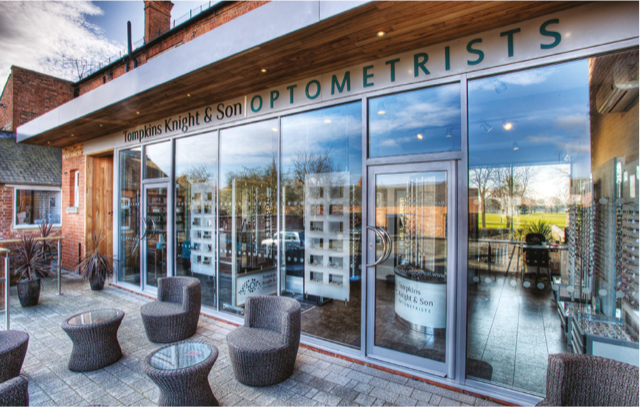The transformative effect of care plans: Keyur Patel
6th August 2020

In the second of our series of blogs focusing on healthcare subscription models we speak to Keyur Patel, Director at Tompkins Knight & Son Optometrists, to get his insight in to how they have incorporated care plans and the impact they have had on the business.
How do you use care plans at TK&S?
“We have always had basic care plans in place and customers are given the option to go on to a subscription payment plan if they want. The first area of the business that this was logical to implement this in (for both customers and us as a business) was with our contact lens wearers.”
What percentage of your patients are on care plans and are you going to roll out care plans further in any other areas?
“Every one of our contact lens patients is on a care plan. We have a smaller number of spectacle wearers paying this way, but from October onwards we are doing a big drive towards reducing the number of one-off payers and increasing the total number of customers paying by subscription. We already have lots of patients on subscriptions for contact lenses, so we know this is a model we are used to internally and externally.
Our entry level plan currently starts at £14.00 per month and includes year-round care as well as reductions on items purchased. Our most comprehensive plan is £60.00 and includes care, contact lenses, and solutions. Do not underestimate how many people will take the simplest option.”
How have you changed/adapted your business model post-covid?
“The safety and well-being of patients and team is at the core of all medical professions.
To protect everyone, the practice is currently only open to appointment, whether you are having an examination or buying some eye drops.
We have reduced the number of eye examinations carried out per day, to ensure that the practice does not get crowded in the slightest and to give us time to appropriately decontaminate after each encounter.
During lockdown, the income generated from our care plan patients (and Government schemes), gave us enough security to ensure that we were able to return to business. Without that revenue stream we would have been in a very different predicament.”
What has your patients’ feedback to care plans been like?
“Overwhelmingly positive. Setting up an ongoing payment plan is what customers are used to and expect. It’s how they pay for a plethora of other services and it makes it more affordable and convenient for them. We never force it upon anyone, but do encourage it because we know it makes so much sense for all involved.”
What do you believe the benefits are for patients and other optical businesses?
“Quite simply – peace of mind, both for the patient and the business owner. The patient receives a complete care package, they know they can reach out whenever they want and that they won’t get stuck with an unexpected bill in the event of an emergency appointment, as well as a reduction in pricing on goods and additional services obtained from the practice, such as a comprehensive Dry Eye appointment. For the business owner, the income being generated all year round means there isn’t the usual concerns around quieter periods and, crucially, if we go into a second lockdown there will not be the same levels of panic within the business.”
What are the main considerations when setting this up?
“Cashflow is a big consideration. We didn’t want all our patients to immediately move to payment plans as we would have taken a big hit on the one-time fees we were used to receiving. Our approach was to gradually incentivise them to go on to a plan by offering a reduction on the one-time fee for today’s consultation THEN start payments for the next 12 months.
Any advice for other businesses like yours hoping to do the same?
“Make the basic plans as simple as possible (both for the patient and internal staff to understand) and add bolt-ons as and when needed. We use Eyeplan, as you can make it as simple or complex as you want and then tailor to the patient’s circumstances. For example, if they are a dry eye or glaucoma patient, then you will be seeing them more regularly so will need to adjust the plan to their requirements.
If you are setting up from scratch and you currently have a big emphasis on one-time clinical fees, you need to be mindful of cashflow as outlined above. A phased approach to any new business model is best.
We recommend offering variable plans for contact lens and spectacle wearers based on the number of times you plan to see them per year.”
How do you calculate what to charge for your care plan?
“We have been very fortunate to have a long-standing relationship with Practice Plan who gave us a lot of guidance.
Basically, you need to know what your expected costs will be – exam cost, how many visits per year etc – and then make the care plan alternative (with additional benefits) the obvious choice.”
What are your thoughts on care plans? Are you hoping to move more of your patients on to a subscription-based payment plan, away from one off fees, to allow for greater predictability in revenues throughout the year whilst simultaneously offering your customers greater peace of mind? We would love to hear your thoughts – tell us on social media.
If you missed our first blog on care plans and subscriptions, you can find it here.
Keyur Patel is Doctor of Optometry and Clinical Director at TKS Optometrists.

